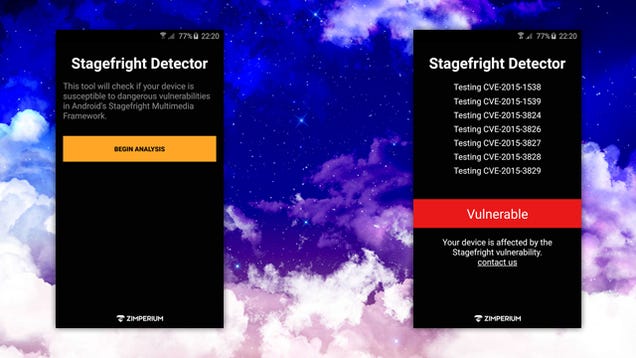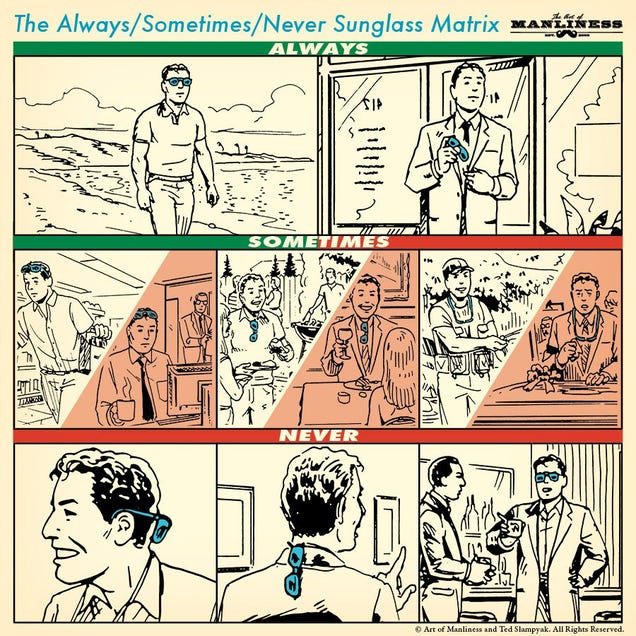
There's finally a presidential candidate who fits the values, character and attitude of the Tea Party to a T — that's "T" as in Trump.
Donald Trump's candidacy is the apotheosis of a movement created to take down the Washington establishment. His brazen hostility toward every conceivable political institution and convention works so well because it echoes the nihilism that the Tea Party injected into the Grand Old Party.
The Tea Party was born in opposition to Obamacare. Its coming-out party was a coordinated ambush of Democratic lawmakers at town hall meetings in the summer of 2009. Though wary of its tactics, its rhetoric, and its antipathy for the GOP establishment, Republican leaders harnessed the growing strength of the Tea Party in 2010 to win control of the House and effectively block President Barack Obama's legislative agenda.
It was during that election that Tea Party–backed candidates began knocking off Republican incumbents and winning hotly contested open-seat primaries. The Tea Party was ascendant, and its influence in the halls of Congress could be seen in the failure of Obama and Republican leaders to reach a grand budget bargain in 2011, a series of standoffs over the federal debt limit, and the 15-day government shutdown in 2013.
But until now, there's never been a Tea Party presidential candidate. Trump, for better and worse, is exactly that — the logical extension of a Tea Party movement that is now playing at the highest level in politics.
"Here is the thing about Donald Trump. Donald Trump is hitting a nerve in this country," Ohio Gov. John Kasich said at the first Republican presidential debate of 2016 Thursday night. "People are frustrated. They're fed up. They don't think the government is working for them. And for people who want to just tune him out, they're making a mistake."
Trump is crushing old-school Tea Party favorites because they're seen as part of the establishment now
The brutal irony for some of his rivals is that they were elected, not too long ago, as Tea Party champions. Kentucky Sen. Rand Paul, Texas Sen. Ted Cruz, and Florida Sen. Marco Rubio all claimed Tea Party backing in winning their seats. Now their combined poll numbers don't add up to Trump's.
/cdn0.vox-cdn.com/uploads/chorus_asset/file/3948784/Screen%20Shot%202015-08-07%20at%206.42.37%20AM.png)
RealClearPolitics average of recent Republican primary polls.
Cruz was responsible for that 2013 government shutdown, and he's threatening to repeat the feat over federal funding for Planned Parenthood. He talks about the "Washington cartel" as a means of distancing himself from party leaders and other influencers in the nation's capital. He needs to have knock-down, drag-out fights with them in public, because it's hard to keep the confidence of anti-establishment voters when his job is in the Capitol. That's not a problem for Trump.
Trump's not a politician. He doesn't live in Washington. He bashes institutions and celebrities alike. And to the extent that he's been involved with politicians to help his business, he's refreshingly honest about it.
"I will tell you that our system is broken. I gave to many people, before this, before two months ago, I was a businessman," he said Thursday night. "I give to everybody. When they call, I give. And do you know what? When I need something from them two years later, three years later, I call them, they are there for me."
The middle-finger factor makes it hard to score points against him with Tea Party voters
Sign outside the Cleveland debate.
There are a lot of reasons Trump has attracted a significant chunk of the Republican Party to his candidacy, including his hard line on immigration and a disdain for Obama so great that he risked his credibility with the establishment by being a vocal "birther."
But perhaps the simplest explanation is the best: He relishes telling other people to go to hell. That's essentially what the Tea Party movement is all about. The Tea Party has no constructive agenda, just a desire to frustrate whatever Democratic and Republican leaders are trying to accomplish. It's anti-government, anti-politician, and anti-media.
So if Trump gets in a verbal scrape with a debate moderator or an elected official, he's a stand-in for Tea Party activists against the establishment. When he all but extends his middle finger to establishment types, he's reminding his supporters that he isn't of Washington. And when he comes under attack, they come under attack. That makes it very hard for his rivals to undermine him with his base.
Several of the candidates took shots at Trump during the debate, but they all seemed to glance off of him. Jeb Bush, asked by a moderator about a report that he had privately referred to Trump as an "asshole" and a "clown," denied that he made the remarks rather than getting in a fight with Trump.
It's not the litmus test yet, but, speaking before Thursday's debate, veteran Republican strategist Alex Castellanos said GOP candidates are going to begin to distinguish themselves by whether or not they can go toe to toe with Trump.
"If they can stand up to Donald Trump, maybe they can stand up to Putin," he said.
Hating media is good for Trump, and it won't stop them from loving him
After the debate, Trump made a personal appearance in the spin room next to the media's filing center. Typically, the top candidates send surrogates to speak for them, which prevents a post-debate gaffe. Trump's arrival touched off a stampede, as Reid Epstein of the Wall Street Journal reported.
The surprise GOP presidential front-runner’s post-debate gaggle sent reporters and photographers into a crush of humanity that sent several tumbling to the ground as the New York developer moved.
Trump proceeded to accuse the Fox debate moderators of being tougher on him than on other candidates. It's hard for a presidential aspirant to run afoul of any constituency by bashing the media, but it's a particularly good strategy for those who court Tea Party voters and disaffected conservatives.
And there's really no loss in terms of the media's appetite for covering Trump. More than 400 media credentials were approved, according to a Republican National Committee aide, and several veteran reporters said they'd never before seen so many journalists at a primary debate.
Mark Leibovich of the New York Times, who has written extensively on the parodies at the nexus of politics and journalism, explained the size and intensity of the media presence this way: "It’s bigger, it’s Trumpier, it’s first."
What Trump and the Tea Party have in common
It's easy to forget because of the amount of attention he's getting now, but Trump is no newcomer to stirring up controversy by going after establishment figures. As was pointed out Thursday, he once called Rosie O'Donnell a "slob" and other epithets, and he's made lewd remarks to women in the past. His response: "I think the big problem this country has is being politically correct."
Trump not only survived the first debate, but he seemed to thrive in moments of conflict with the moderators and his rivals.
A Monmouth University poll in July found that 55 percent of self-identified Tea Party Republicans held a favorable view of Trump, compared with 26 percent who held an unfavorable view. Whether people describe themselves as belonging to the Tea Party movement or not, the movement's basic anti-establishment bent has become a big factor within the Republican Party. That can be seen in the difficulty Republican leaders have had in corralling votes for even the most basic legislation this year.
What the Tea Party and Trump have in common is that neither cares much for the Republican Party establishment, and, ironically, that's got Trump in the pole position for the GOP presidential nomination.








/cdn0.vox-cdn.com/uploads/chorus_asset/file/3904962/Screen%20Shot%202015-07-24%20at%201.41.51%20PM.png)
/cdn0.vox-cdn.com/uploads/chorus_asset/file/3904368/GOP%20field%20debates.png)
/cdn0.vox-cdn.com/uploads/chorus_asset/file/3514580/111307814.0.jpg)
/cdn0.vox-cdn.com/uploads/chorus_asset/file/3904456/GOP%20losers.png)



/cdn0.vox-cdn.com/uploads/chorus_asset/file/3903934/memefont.jpg)
/cdn0.vox-cdn.com/uploads/chorus_asset/file/3903976/catmeme.jpg)
/cdn0.vox-cdn.com/uploads/chorus_asset/file/3903988/05109748.jpg)
/cdn0.vox-cdn.com/uploads/chorus_asset/file/3904176/impactad.jpg)
/cdn0.vox-cdn.com/uploads/chorus_asset/file/3904270/theimpactofimpact.jpg)
/cdn0.vox-cdn.com/uploads/chorus_asset/file/3904386/impactdemo.jpg)
/cdn0.vox-cdn.com/uploads/chorus_asset/file/3904540/i-can-has-cheezburger.jpg)
/cdn0.vox-cdn.com/uploads/chorus_asset/file/3904558/boromirmeme.jpg)
/cdn0.vox-cdn.com/uploads/chorus_asset/file/3904688/cutimpact.jpg)
 The Merchant Customer Exchange's contactless payment system, CurrentC, is gearing up for a limited trial run next month in the stores of the companies that began backing MCX in 2012, including Walmart, Target, and Best Buy, according to unnamed sources speaking with
The Merchant Customer Exchange's contactless payment system, CurrentC, is gearing up for a limited trial run next month in the stores of the companies that began backing MCX in 2012, including Walmart, Target, and Best Buy, according to unnamed sources speaking with 




/cdn0.vox-cdn.com/uploads/chorus_asset/file/3895604/2015-06-30%2010.25.28.jpg)
/cdn0.vox-cdn.com/uploads/chorus_asset/file/3897834/2015-06-30%2010.26.07.jpg)
/cdn0.vox-cdn.com/uploads/chorus_asset/file/3898502/2015-06-30%2010.26.57.jpg)
/cdn0.vox-cdn.com/uploads/chorus_asset/file/3897688/2015-06-30%2010.30.32.jpg)
/cdn0.vox-cdn.com/uploads/chorus_asset/file/3897722/2015-06-30%2010.29.22.jpg)
/cdn0.vox-cdn.com/uploads/chorus_asset/file/3897842/2015-06-30%2012.30.24.jpg)
/cdn0.vox-cdn.com/uploads/chorus_asset/file/3898222/2015-06-30%2011.34.30.jpg)
/cdn0.vox-cdn.com/uploads/chorus_asset/file/3898254/2015-06-30%2012.03.51.jpg)
/cdn0.vox-cdn.com/uploads/chorus_asset/file/3900734/Screenshot%202015-07-23%2010.47.43.png)



/cdn0.vox-cdn.com/uploads/chorus_asset/file/3882682/teslademonstration.0.jpg)
/cdn0.vox-cdn.com/uploads/chorus_asset/file/3882988/edisondemonstration.0.jpg)


/cdn0.vox-cdn.com/uploads/chorus_asset/file/3890844/lifeattwo.jpg)
/cdn0.vox-cdn.com/uploads/chorus_asset/file/3890800/lifeatthirty.jpg)
/cdn0.vox-cdn.com/uploads/chorus_asset/file/3890806/lifeatsixty.jpg)

/cdn0.vox-cdn.com/uploads/chorus_asset/file/2934014/518a6cedb3fc4bb6e600001c_the-moscow-affair_grim_reaper-1000x493.0.jpg)
/cdn0.vox-cdn.com/uploads/chorus_asset/file/3884850/Screen%20Shot%202015-07-17%20at%2010.54.44%20AM.png)